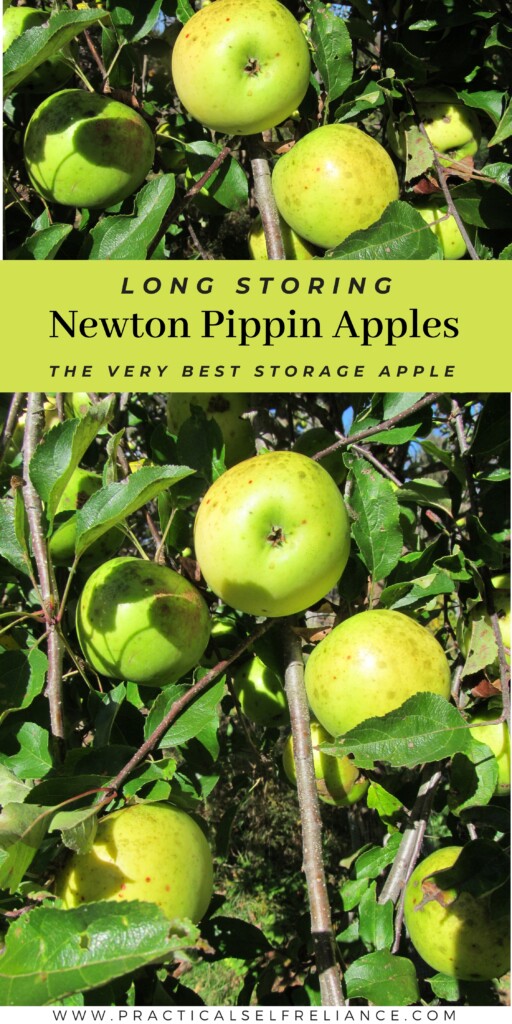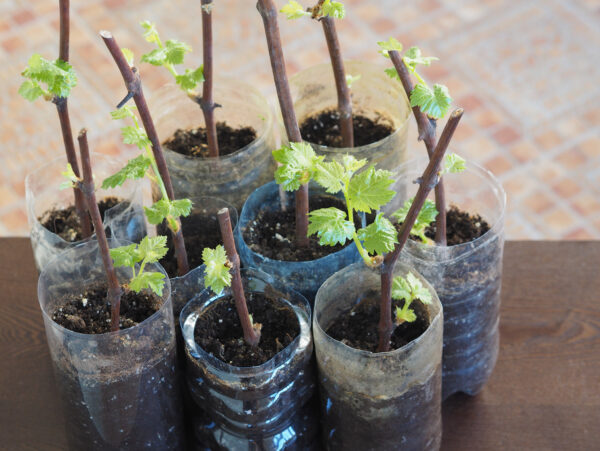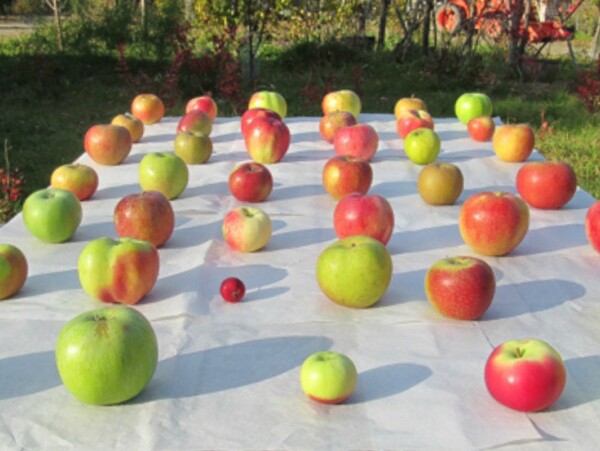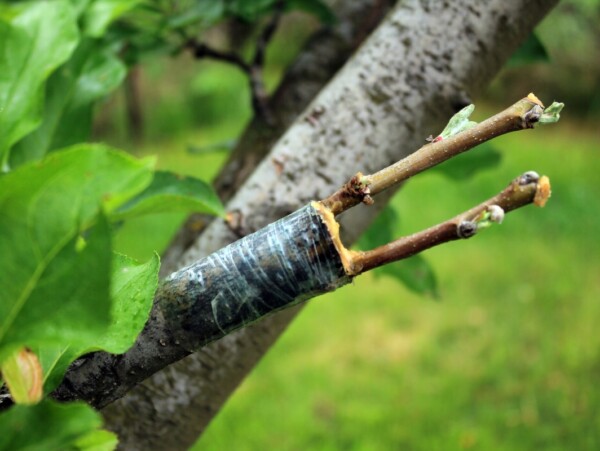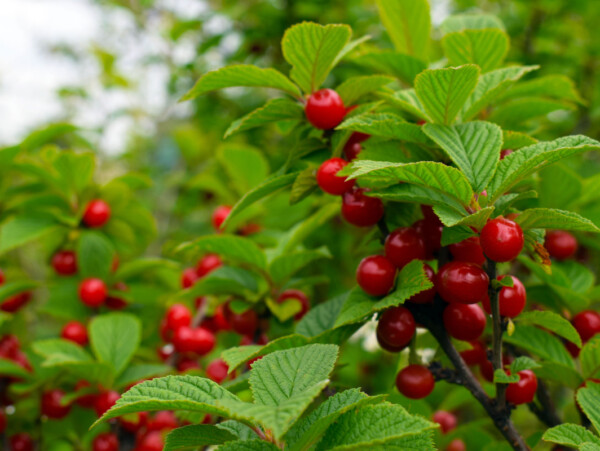Affiliate disclosure: This post may contain affiliate links. Please see our Privacy Policy.
Newton Pippin apples are an heirloom variety known for their incredible storage life and rich, complex flavor. With the right conditions, they can last over a year in storage—making them a favorite for homesteaders, bakers, and anyone aiming for year-round homegrown fruit.
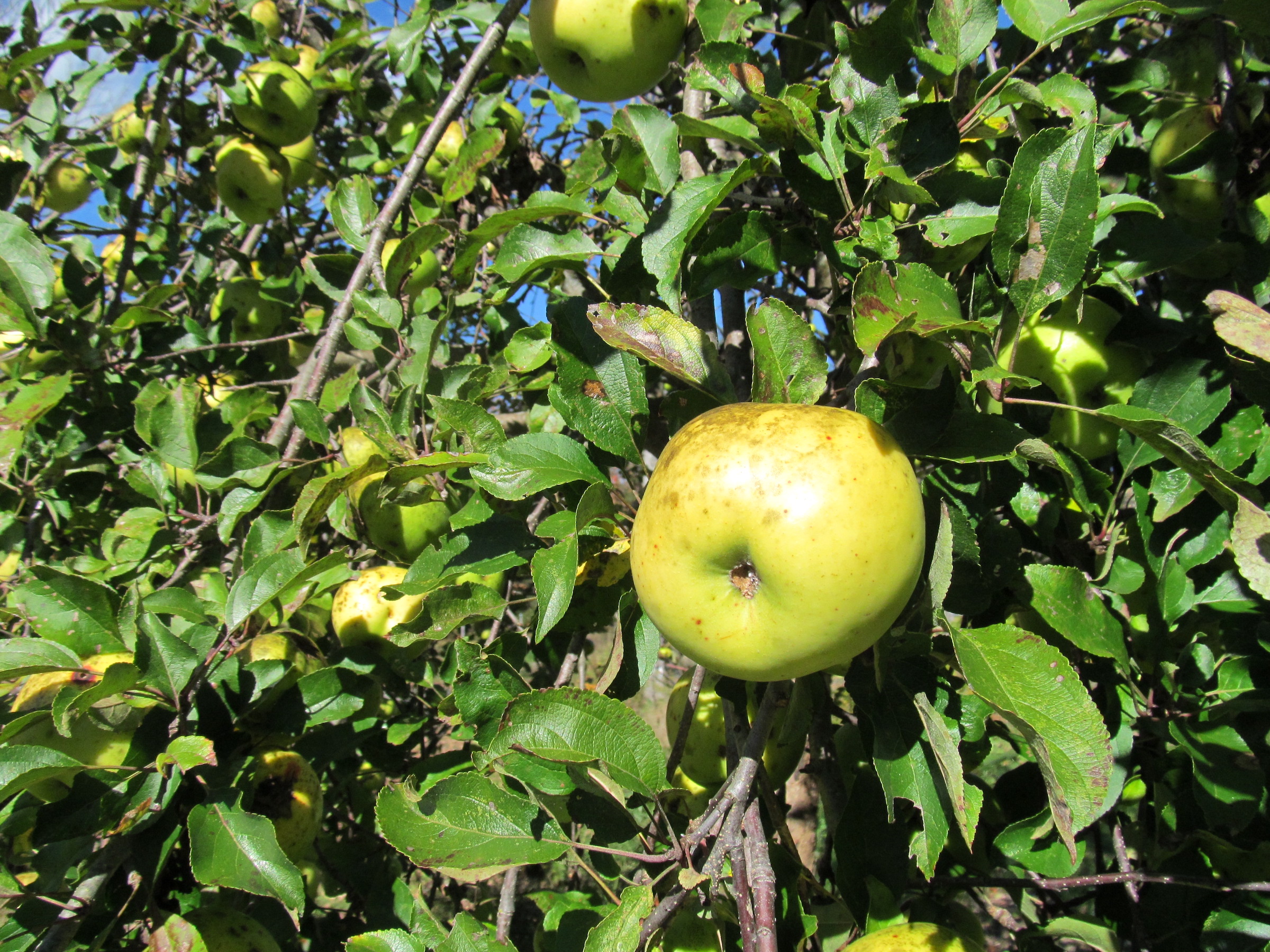
I have this dream of one day living a year without a grocery store, where we live on our homegrown produce. It’s not something you can do at the drop of a hat, obviously, but we’ve been planning (and planting) orchards for year round fruit, perennial vegetables, hardy nut trees and all manner of other food crops on our land here in Vermont for more than a decade.
Storage apples are a huge part of our self sufficient fruit supply.
If you’re serious about food storage and long-term self-reliance, Newton Pippin apples are a homestead treasure. These heirloom apples are one of the few varieties that can be stored for over a year with minimal effort—no refrigeration, root cellar, or fancy setup required.
Just wrap them in newspaper, tuck them in a cool basement, and forget about them… until you’re baking pies with them more than 12 months later.
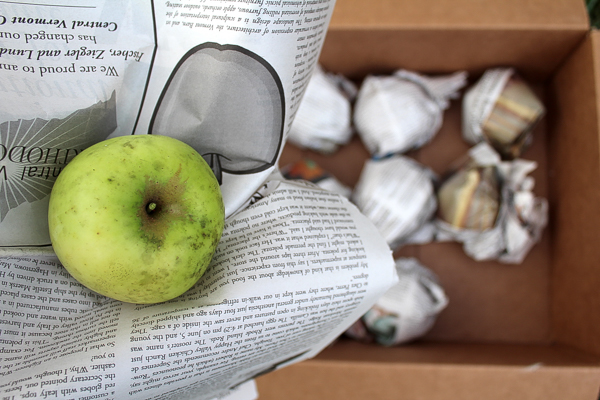
We’ve kept Newton Pippins for 14 months in our basement, and they were still good enough for baking—firm, tart, and full of flavor. It’s our favorite pie apple, and one year we made apple pie from them for our second Christmas after harvest.
If that’s not a long-keeping apple, I don’t know what is!
The History of Newton Pippin Apples
Newton Pippins (also called Newtown Pippins) are one of America’s oldest apple varieties, dating back to the early 1700s in New York. They were a favorite of both Thomas Jefferson and George Washington, who praised their flavor and longevity. By the 1800s, they were being exported to England, where they gained a reputation as a premium dessert apple—especially after it was discovered that their flavor improved dramatically with storage.
Though once widely planted, Newton Pippins fell out of commercial favor in the 20th century, largely due to their irregular shape and longer storage requirements before reaching peak flavor. But for home growers and homesteaders, they remain a top choice for winter eating and year-round preservation.
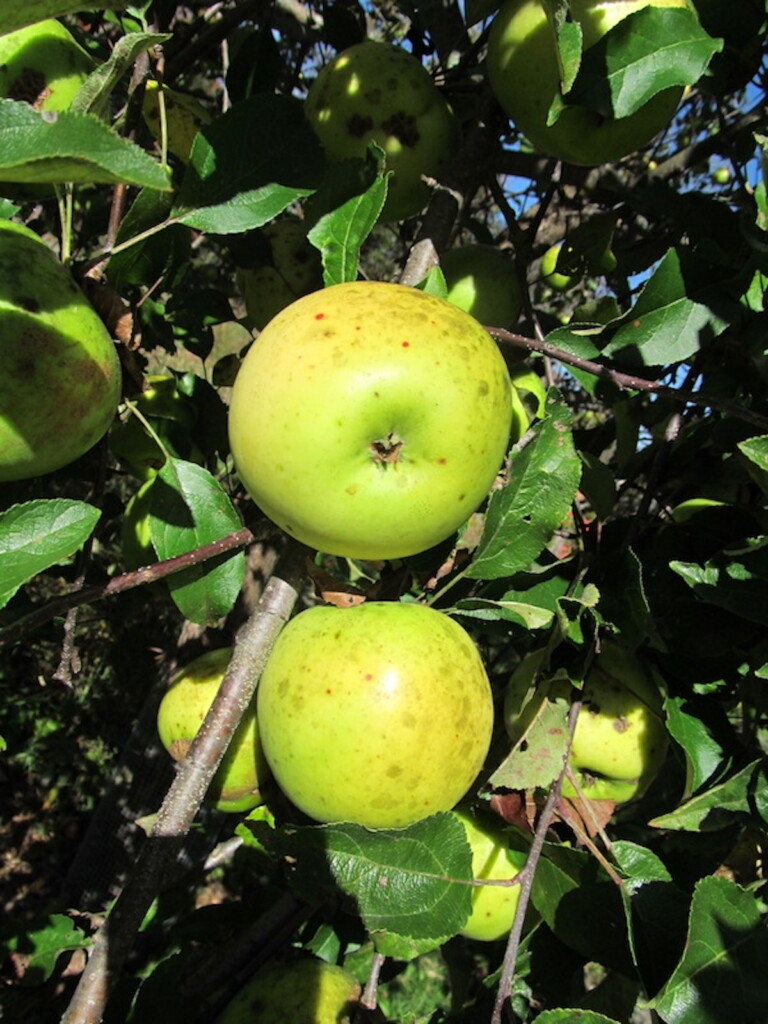
Appearance and Flavor
Newton Pippins are not flashy apples. They’re medium to large, often slightly lopsided or lumpy, with a dull green skin that may develop a yellow blush after months in storage. They don’t look like much, but don’t let appearances fool you—these apples are all about substance.
Fresh off the tree, the flavor is sharp and acidic, almost too tart to eat out of hand. But give them a few months to mellow, and the transformation is remarkable. The starches convert to sugars, the tartness softens, and the rich, complex flavor starts to shine.
By late winter or early spring, a properly stored Newton Pippin is as good as gold.
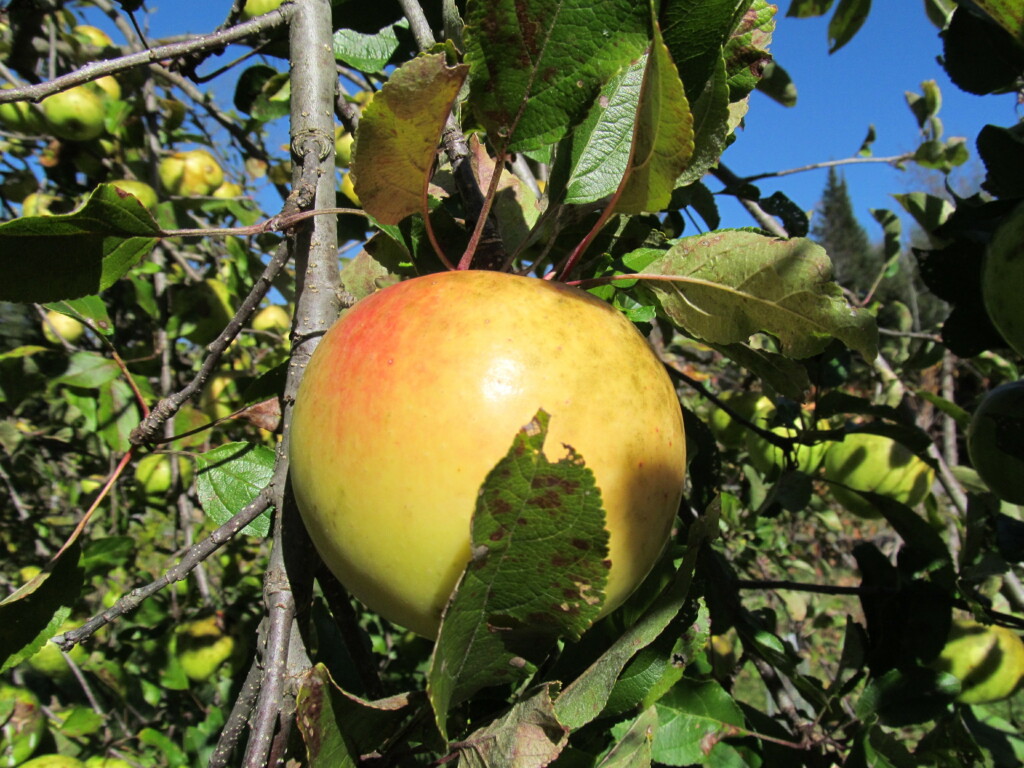
Best Uses for Newton Pippins
While Newton Pippins are technically considered a dessert apple, their tartness and dense flesh make them ideal for cooking, baking, and pressing into cider. Here’s how we like to use them:
Apple pie and crisps: After months in storage, the flesh holds its shape well and the flavor deepens, making for a balanced, rich pie without needing extra sugar.
Cider making: Pippins were historically prized for cider thanks to their balance of sugars, acids, and tannins. They can be pressed fresh or blended with other apples for a more complex flavor, and they make a wonderful apple wine or hard cider.
We also waterbath can apple cider each year for making mulled cider in the winter, and they make a wonderful sweet cider even as a single variety.

Winter fresh eating: Once they’ve mellowed in storage, they’re surprisingly pleasant to eat out of hand—crisp, juicy, and slightly spicy with just enough sweetness.
Apple butter, sauce and jam: Their high acidity gives apple butter a tangy depth you won’t get from sweeter apples, and they make a wonderful apple butter. If you don’t mind a bit more cooking time, they break down beautifully. It does, however, take forever for them to break down, and they’re well suited to a chunky apple jam, where you really value the fact that they hold together in cooking.
How We Store Newton Pippins for Over a Year
We don’t have a traditional root cellar—just a cool corner of the basement and a pile of newspaper. Each fall, we sort through our apple harvest, selecting only the firmest, blemish-free Newton Pippins. We wrap each apple individually in newspaper, place them in cardboard boxes, and store them in a basement room that stays around 40°F through the winter.
As long as the humidity stays moderate and you check the boxes every month or two for any spoilage, they’ll keep beautifully. We’ve had years where they lasted through the following winter holidays, and they were still firm enough for baking—maybe not fresh-eating perfect, but absolutely pie-worthy.
There’s nothing quite like baking an apple pie in December from fruit you picked the previous October.
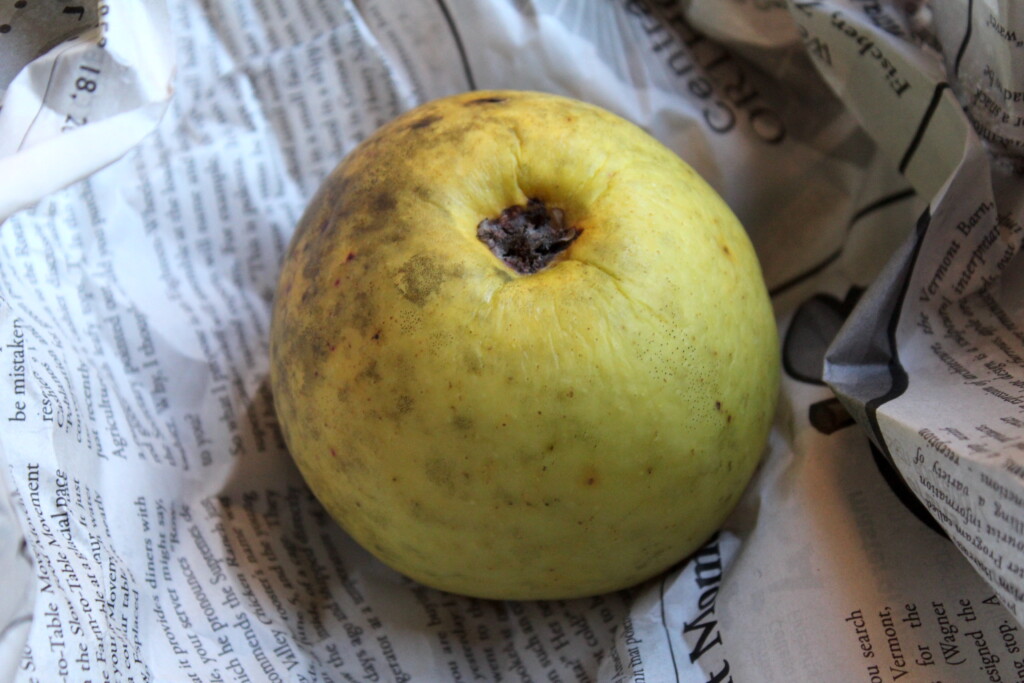
Growing Newton Pippin Apples
If you’re planning a home orchard, Newton Pippins are a smart choice for extending your apple season well into spring. The trees are moderately vigorous and tend to bear well, though they do require thinning to avoid biennial bearing (heavy crops one year, light the next).
They’re considered a late-season apple, usually ripening in October, and benefit from staying on the tree as long as possible before picking. They’re best suited for USDA zones 5 to 8 and perform well in both eastern and western climates, though they need a good chilling period in winter.
Newton Pippin trees are partially self-fertile but will yield better with a compatible pollinator nearby—something like Golden Russet, Ashmead’s Kernel, or another heirloom mid- to late-bloomer.
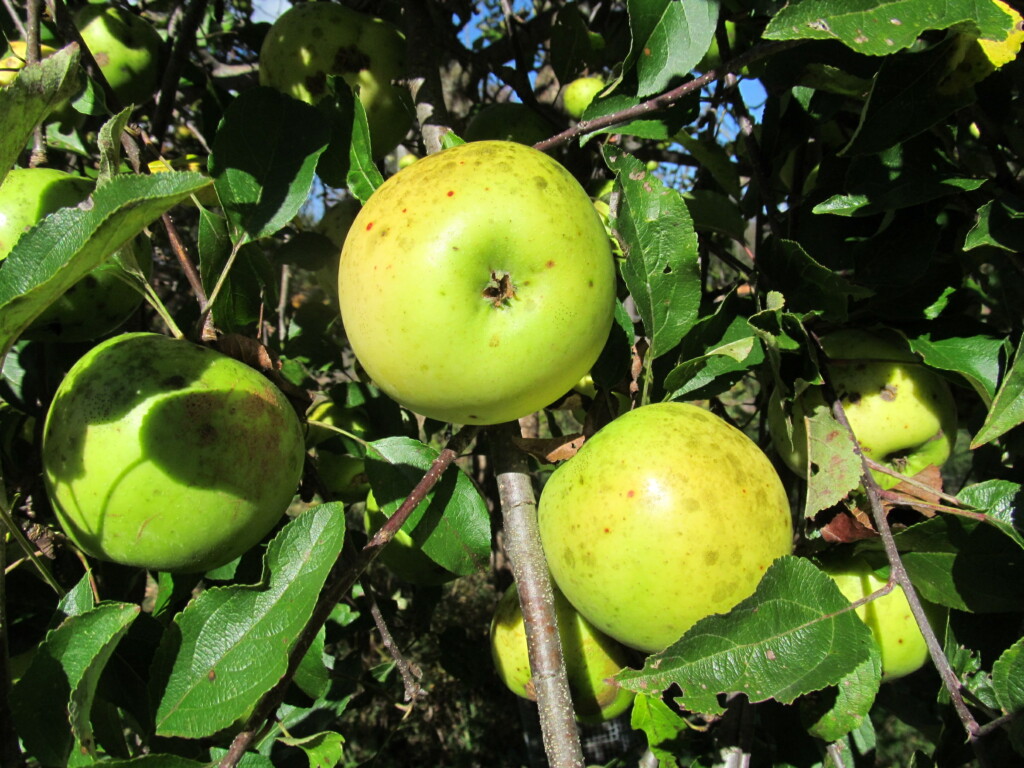
Where to Find Newton Pippins
You won’t often find Newton Pippins at the grocery store, but some heirloom orchards still grow them, and they occasionally show up at farmers markets in the fall. If you’re lucky enough to find a local source, stock up and try storing some yourself.
Better yet, plant your own tree. Several heritage nurseries and mail-order catalogs carry Newton Pippin grafted trees. If you’re planting with an eye toward long-term food storage, this is one apple that earns its keep well beyond harvest season.
And if you’re interested in starting your orchard from scratch, you might even try growing apple trees from seed—it takes patience, but it’s possible with cold-hardy varieties like this one.
A Heritage Apple Worth Keeping
The Newton Pippin apple may not have the crisp sweetness of a Honeycrisp or the glossy look of a store-bought Gala, but it brings something far more valuable to the table: longevity, reliability, and flavor that rewards patience. For homesteaders, traditionalists, and home bakers alike, this apple stands the test of time—literally.
If you want apples that keep well past the holidays (and maybe even into the next year’s holiday baking), plant yourself a Newton Pippin. You won’t be disappointed.
